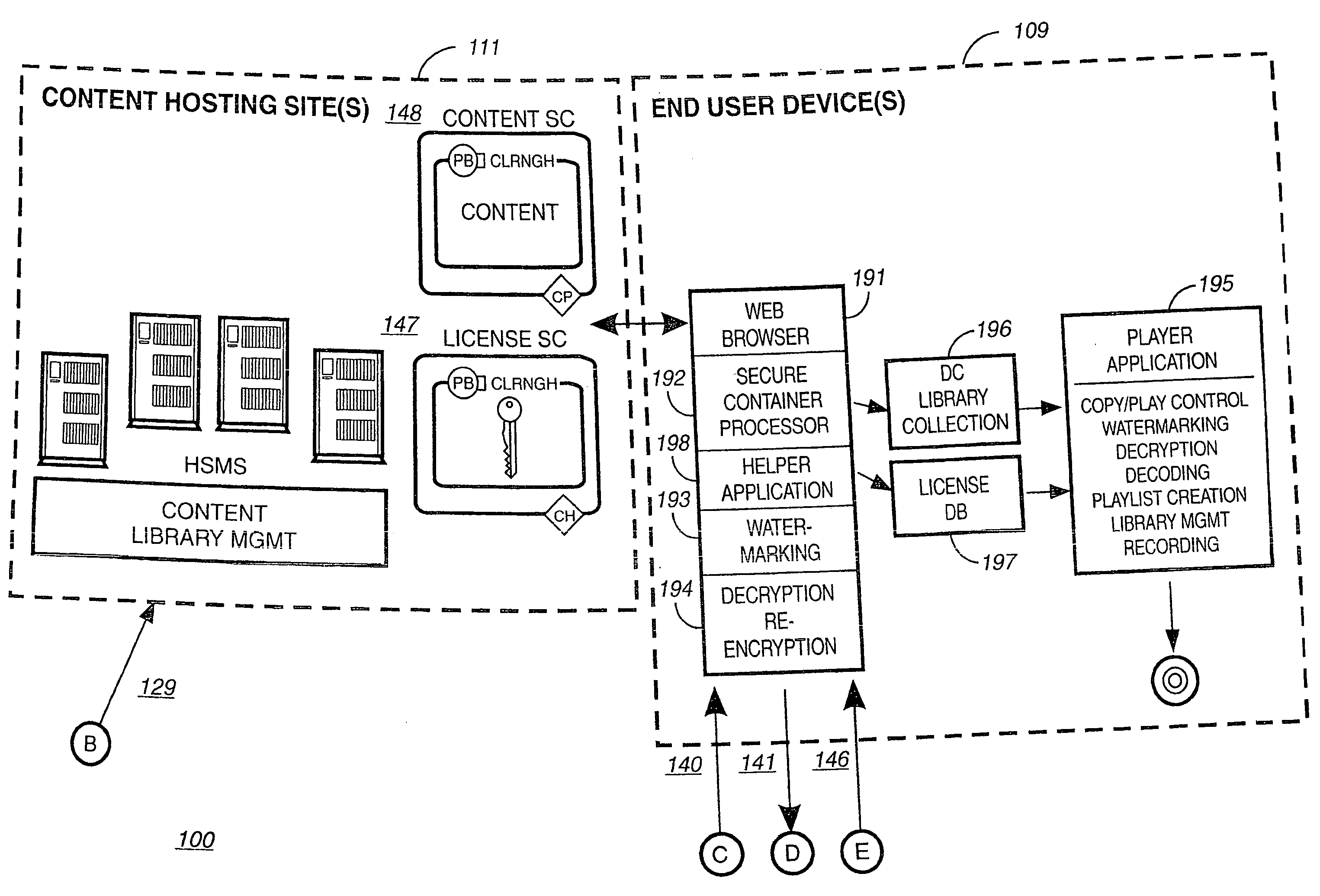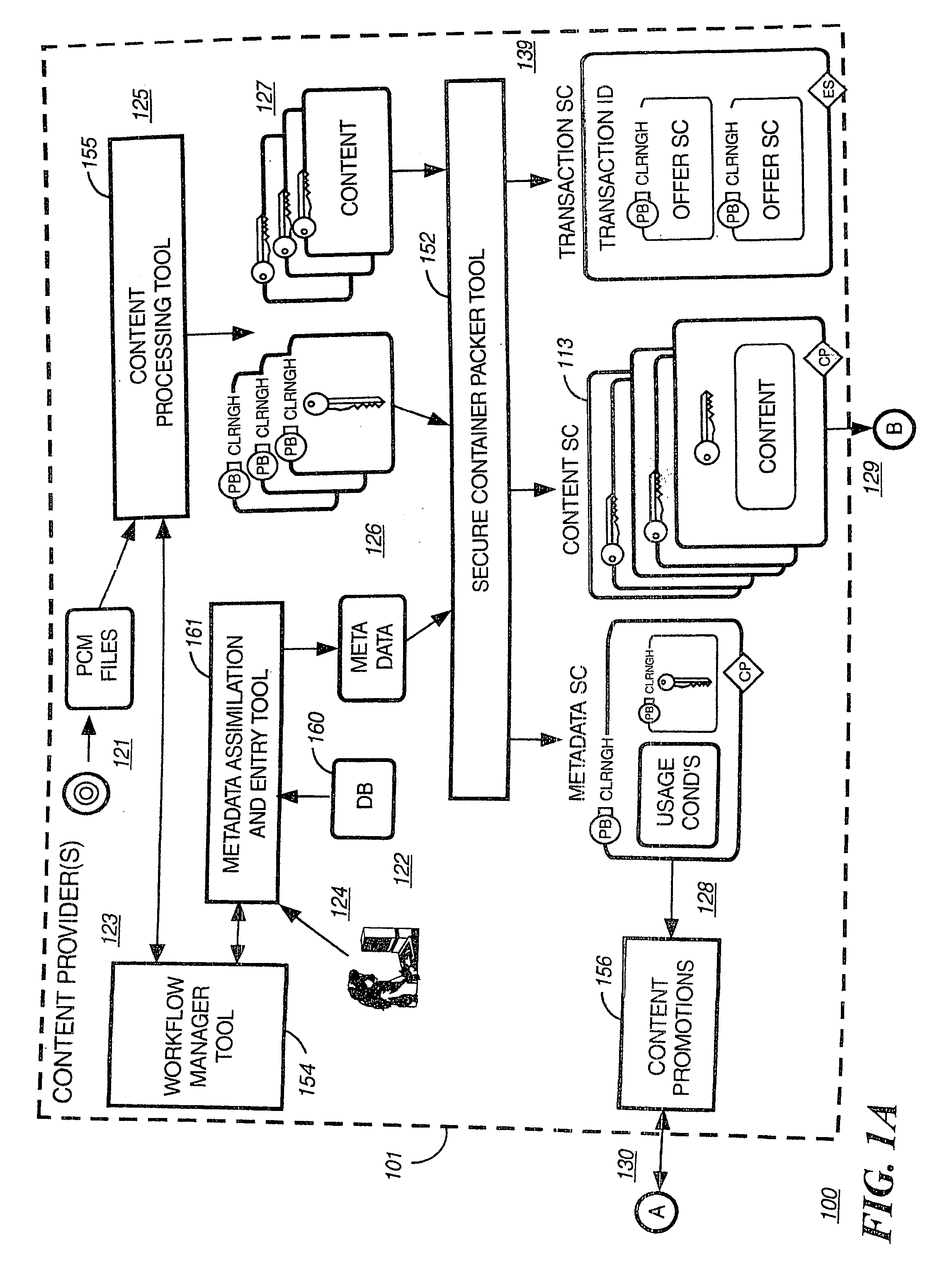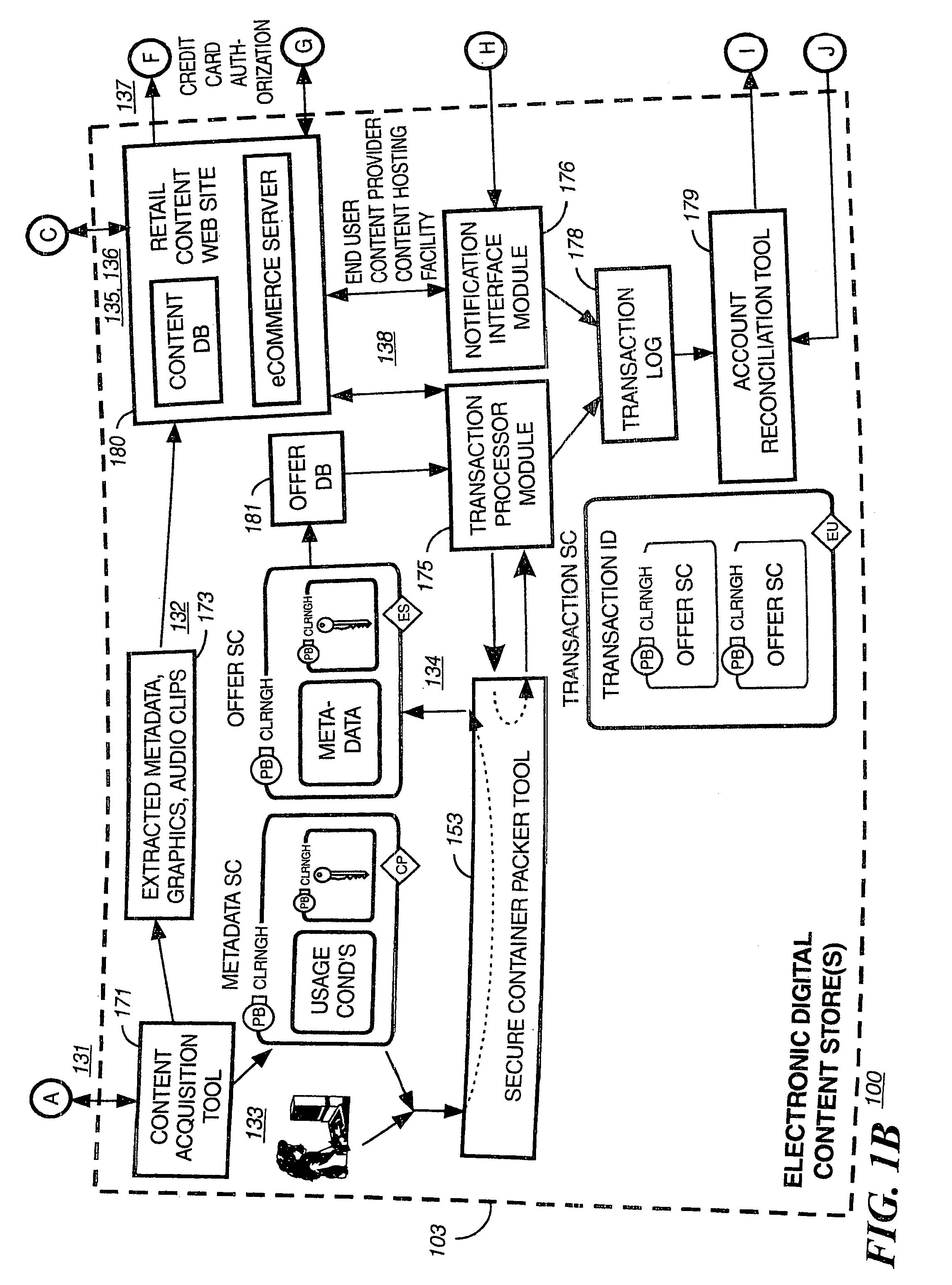At the same time owners and publishers of valuable
digital content have been slow to embrace the use of
the Internet for distribution of digital assets for several reasons.
A second barrier, is the format of the content itself i.e. is the content stored in an analog format versus a digital format.
However, once the encrypted digital content is de-encrypted on the end-user's
machine, the digital content is readily available to the end-user for unauthorized re-distribution.
However, in the online world where the content providers impose usage conditions on the digital content, the ability of electronic stores to differentiate themselves may be severely limited.
Moreover, even if the usage conditions can be changed, electronic stores are faced with the difficult task of
processing the
metadata associated with the digital content from the content providers to promote and sell products electronically.
Third, the electronic store is required to extract certain metadata used for promotional materials such as
graphics and artist information.
The time, cost and testing needed to create these customized
software programs can be large.
Still, another reason owners of digital content have been slow to embrace electronic distribution is the difficulty in preparing content for electronic distribution.
Inventorying and keeping track of these different mixes can be burdensome.
Another shortcoming is the possibility of operator transcription error in selecting data from a
database.
The compression
algorithm and compression level selected for one genre may not be the optimal choice for another genre of music.
Content providers may find certain combinations of compression algorithms and compression levels work very well for one genre of music, say classical, but provide unsatisfactory results for another genre of music such as heavy
metal.
The requirement to always have to manually set these encoding parameters such as setting the
equalization levels and the
dynamic range settings for each digital content can be burdensome.
The process to compress content can require a large amount of dedicated computational resources, especially for larger content items such as full-length feature movies.
This leaves the calling application with no way to gauge the amount of content that has been encoded as a percentage of the entire selection of designated to be encoded.
In circumstances where the calling program is trying to schedule several different programs to run at once this can be a problem.
Furthermore, this can be especially burdensome in cases where batches of content have been selected for encoding and the content provider wants to determine the progress of the encoding process.
Still another reason digital content providers have been slow to adopt electronic distribution for their content is lack of standards for creating digital players on end-user devices for electronically delivered content.
Still, another problem is with digital content electronic distribution systems is the length of time it takes to download content over standard telephone and cable lines.
Although other higher bandwidth delivery systems such as
cable Internet access and
broadband is growing in popularity, these system are still not widely available in many towns and cities.
Furthermore, many of the higher bandwidth delivery systems may cost both the provider of digital content and the buyer of digital content high costs because of connect time.
Yet, still another problem with simple distribution of digital content that is protected through
encryption from one
consumer to another while protecting usage rights is currently not feasible.
 Login to View More
Login to View More  Login to View More
Login to View More 


